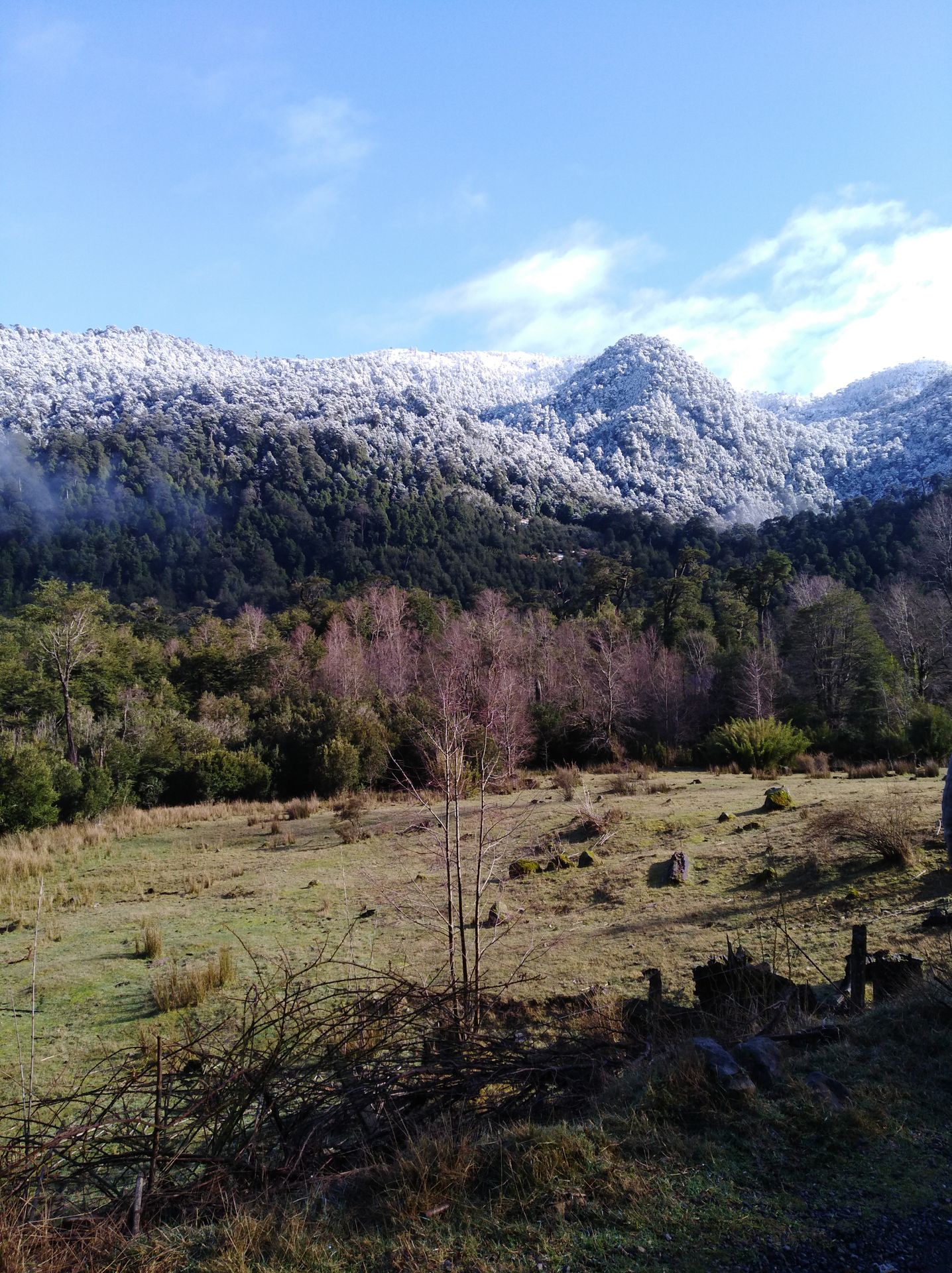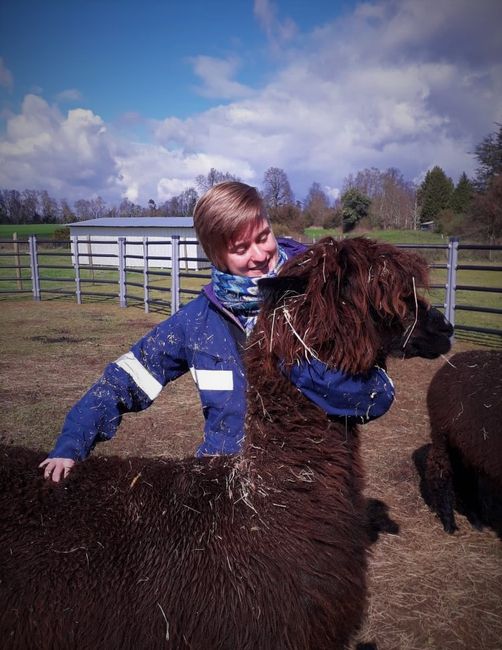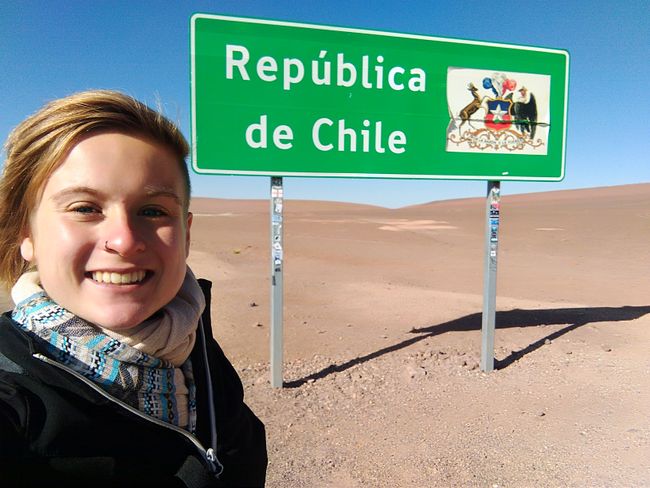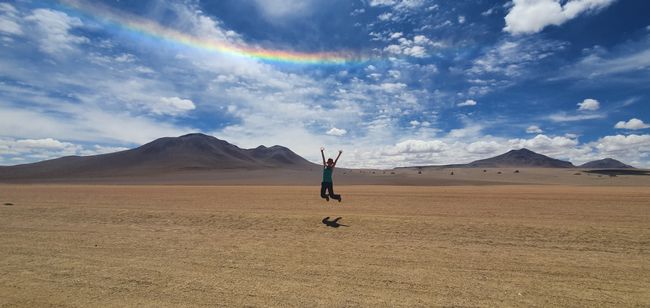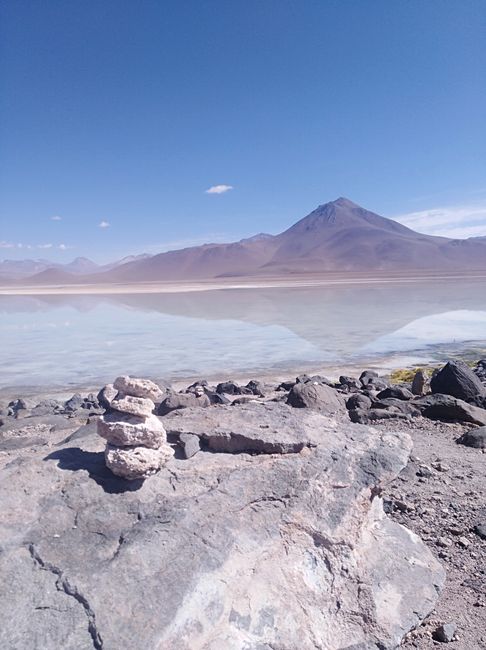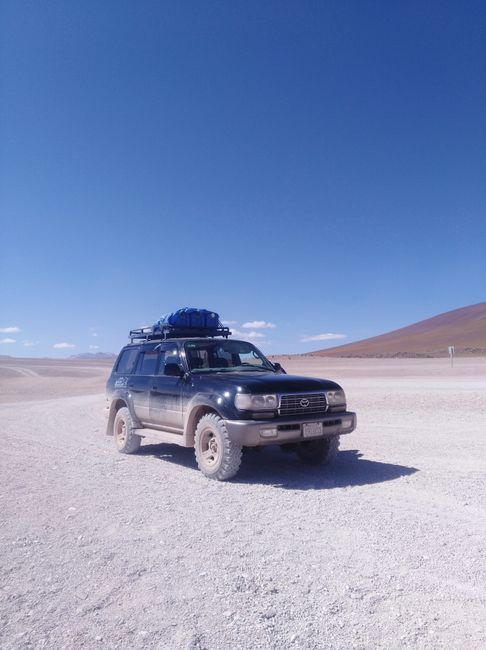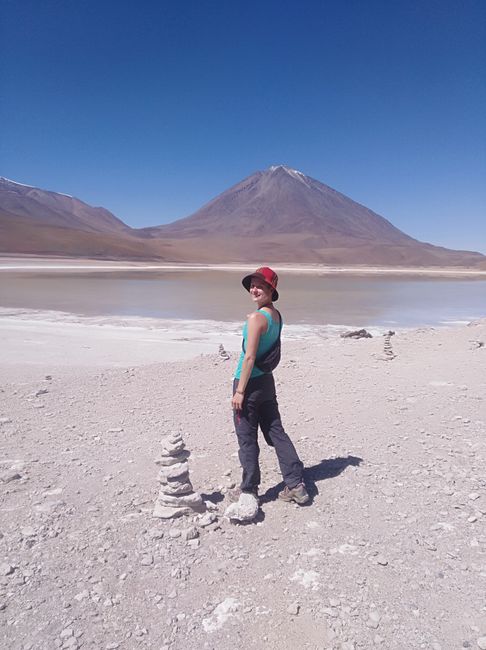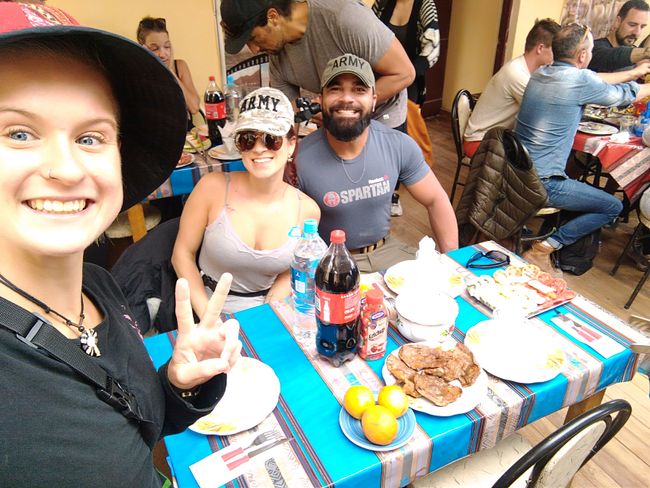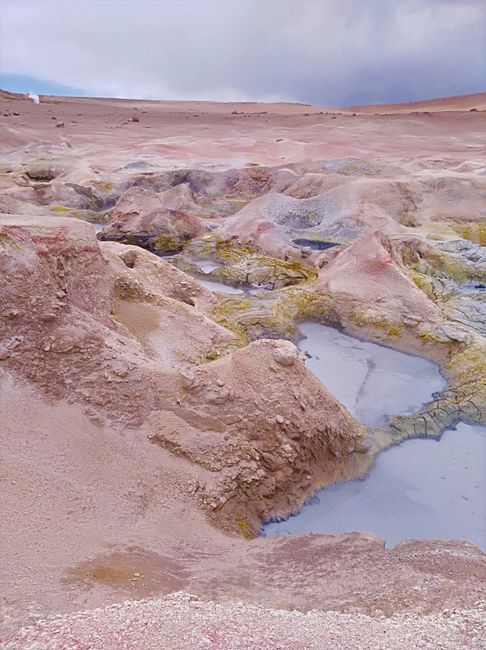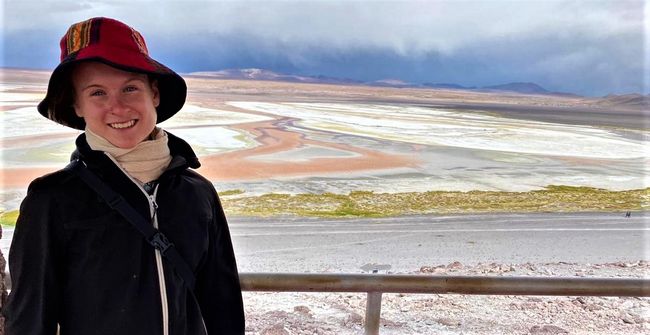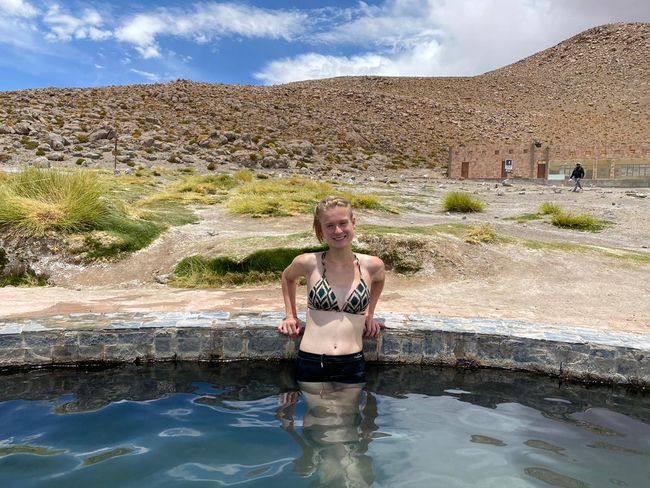Salar de Uyuni - a 4-day road trip (Part 1)
Argitaratu: 19.01.2020
Harpidetu Buletinera
I had the opportunity to take a 4-day trip in a jeep to the largest salt flat in the world (in Bolivia). It was incredibly exciting, but also exhausting. I saw things there that are simply out of this world. But they are, because I was there... Anyway, during this journey, I wrote a diary on my smartphone. It helped me to digest the wonders a bit, so here are my experiences.
6 a.m.: The alarm clock rings mercilessly. Maybe I shouldn't have had that cocktail with Felipe yesterday or maybe it's because of the lack of sleep for the past few nights. Oh well, I packed my things and said goodbye to Felipe. At 7, I'm sitting on the Twenty Bus to the Bolivian border with two Brazilians. The border controls are taking forever once again.
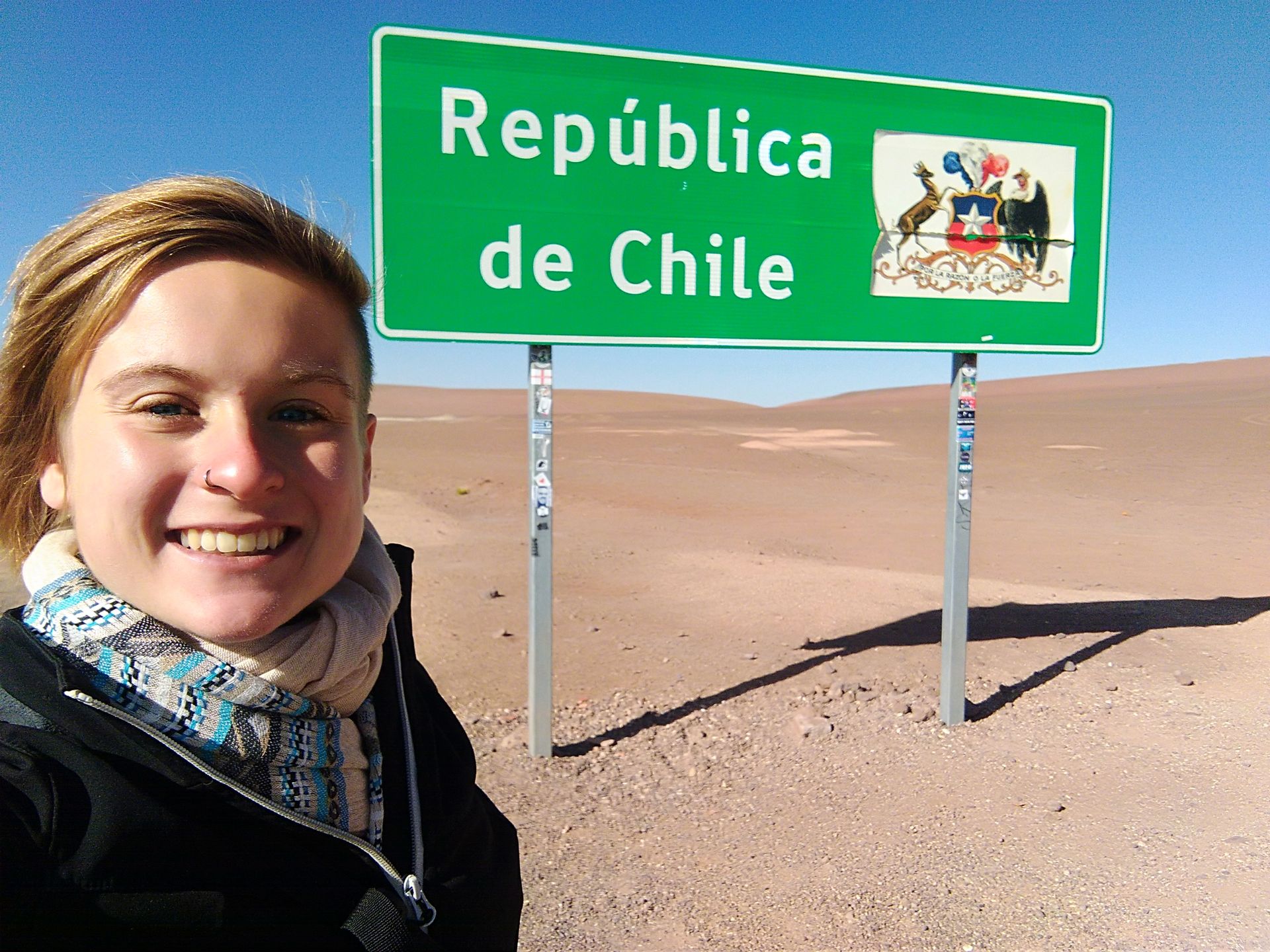
After the border, we stop at a parking lot for breakfast. Like the past few days, it's really good. Fresh bread, cheese, sausage, and avocado! (My highlight) plus a tea or coffee and a piece of cake. Then we change the car, the three of us get into Diego's jeep and off we go.

I don't know if you're familiar with the stereotypes of South America, but Brazilians always take the most amazing photos for social media. It's the same with my two travel companions. They have really good phones, a mega camera with a tripod, and even a drone. It takes us forever at every stop, but that way I can enjoy nature more and have my 'Insta' photos later.
So off we go. The couple wants to sit in the back, so I get the front panoramic seat next to Diego, how cool is that? Normally there are 6 people in a jeep, and the luggage goes on the roof.
During this tour, I have been able to witness so many incredible natural spectacles, it feels like landing on a different planet. The altitude also makes you breathless, so I felt weightless. You spend the whole day taking photos because you want to capture what you see. So I try to show the most beautiful photo at each spot. Just to clarify, yes, it really looked like that, I wasn't on drugs and the photos are at most edited with a brightness filter.
Our first stop is the Laguna Blanca. Radiantly white from the chalk.
Okay, you can still find a bit of green vegetation on the shore and a few flamingos frolicking in the distance. You can observe 3 different species here. The more pink the bird, the older it is, because the color comes from its diet.
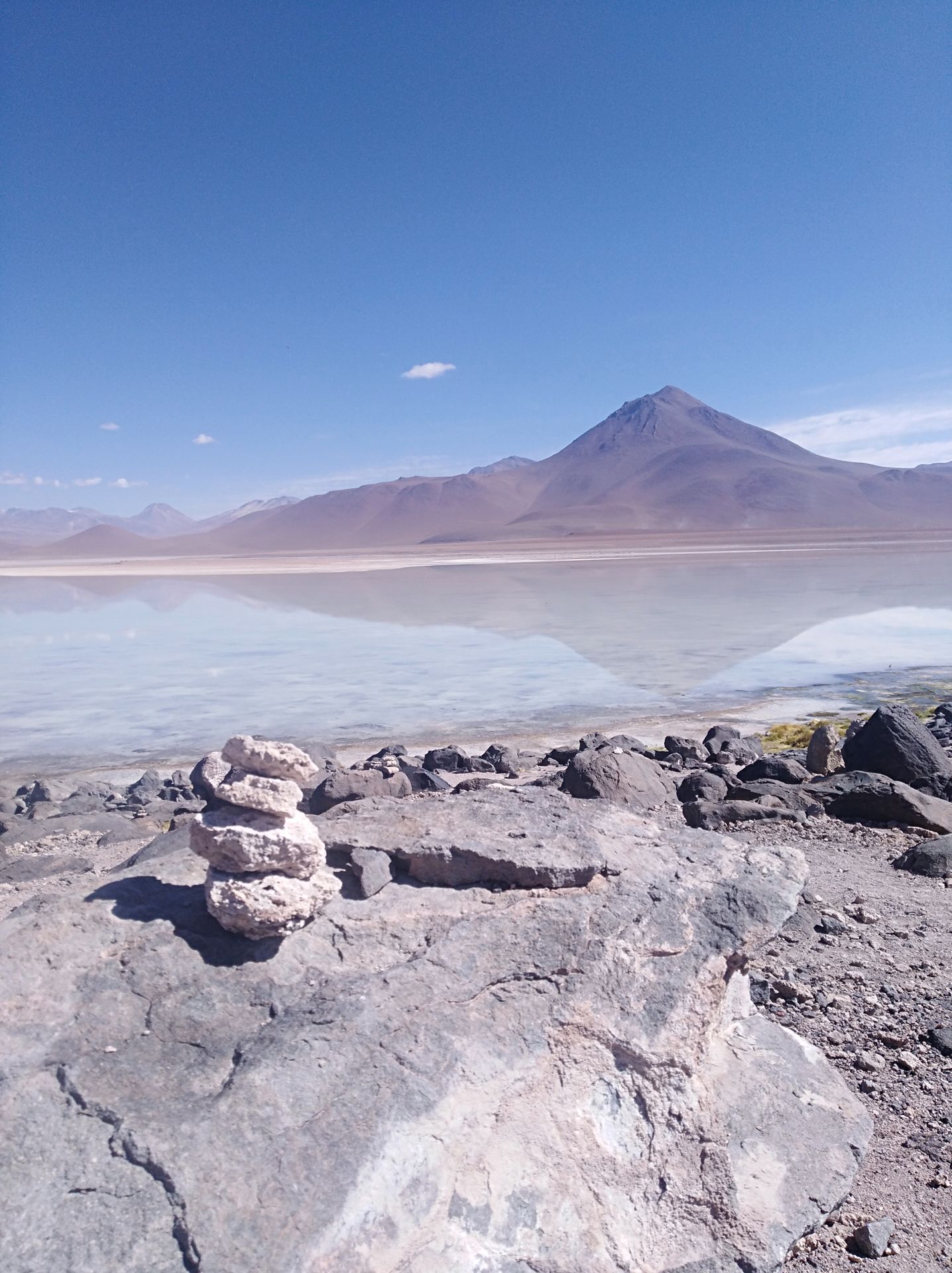
Second stop, Laguna Verde with a view of the volcano 'Lincancabur'. Unfortunately, it wasn't really green, but that should only happen in the afternoon. Because when the wind picks up, the nutrients mix and the lagoon gets its color.
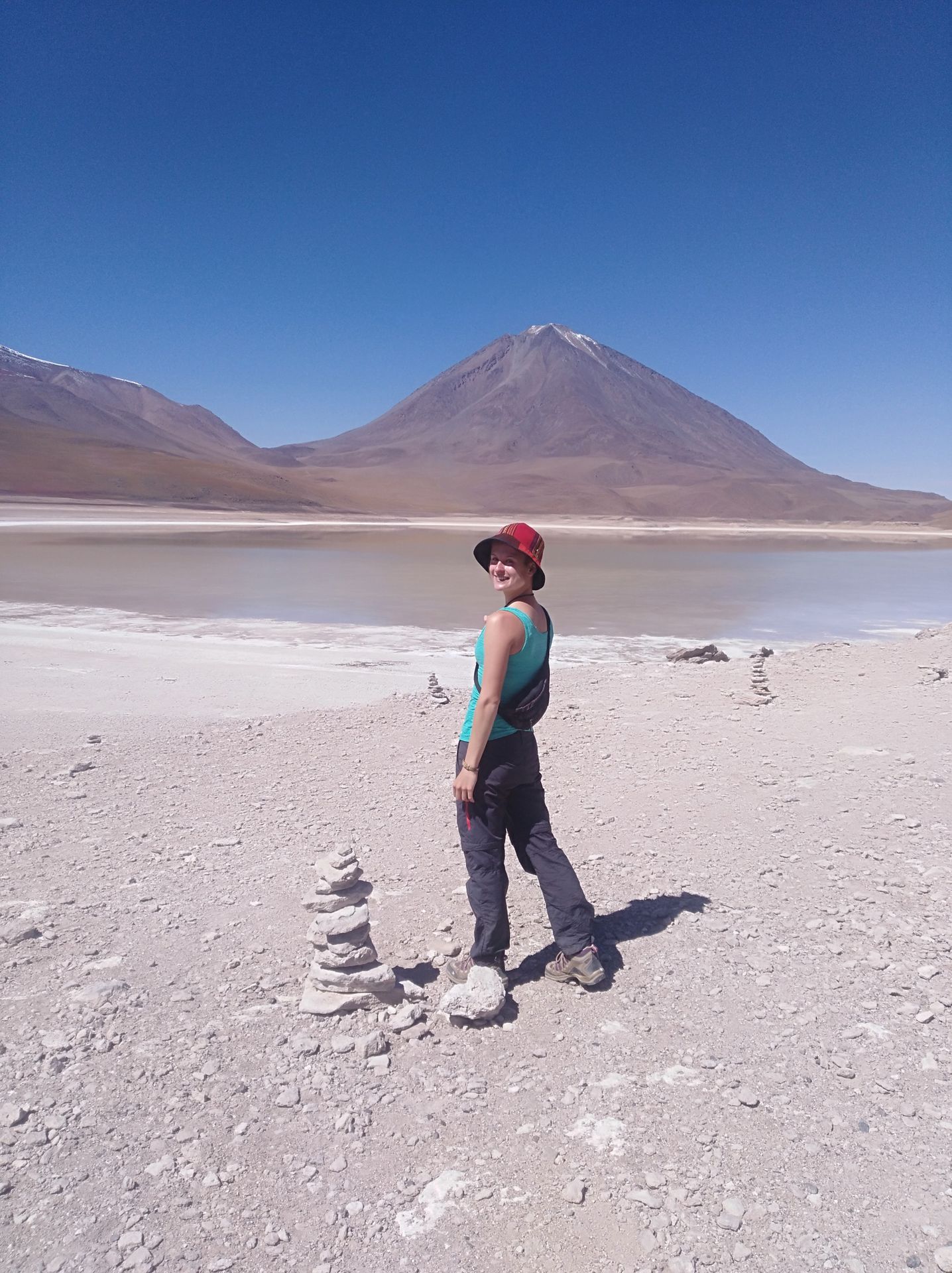
The road trip continues through incredibly colorful mountains towards 'Desierto Salvador Dalí'. Apparently, the artist who shaped the architecture of Barcelona painted a picture with a similar landscape. Here something happened that I never thought possible! Some clouds took on the colors of the rainbow. The refraction of light works differently at an altitude of 4200 meters and you can observe this spectacle more often. I could have stood there for hours, because the rainbow doesn't disappear!
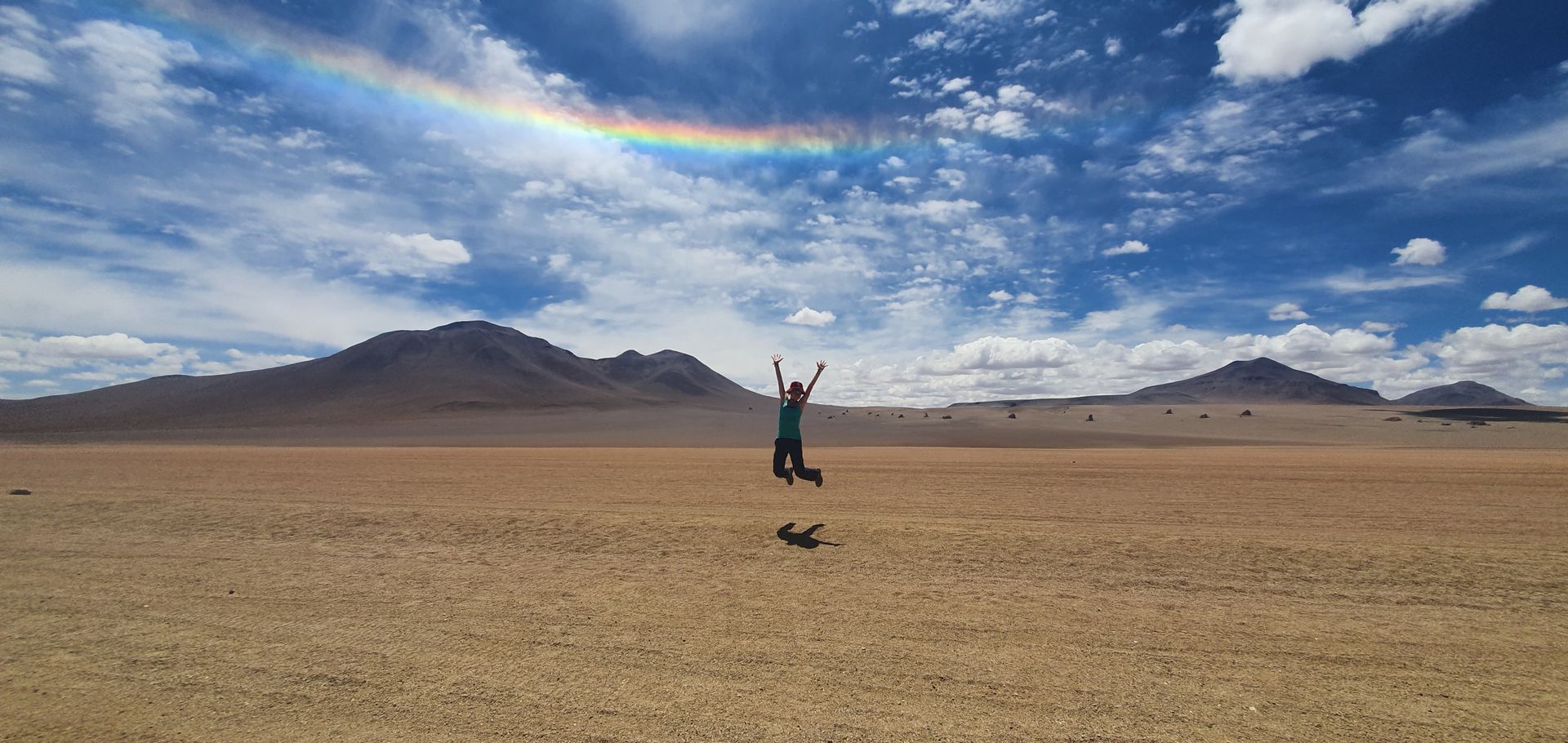
Before lunch, we stop at Laguna Poques, where we throw ourselves into the 35-degree hot water in our bikinis under the 40-degree sunshine. It's surreal in this landscape. Especially since some people take beautiful poser photos here, wearing their golden swimsuits and holding a bottle of Bailis. Of course, I had mine taken as well, to remember this bath.
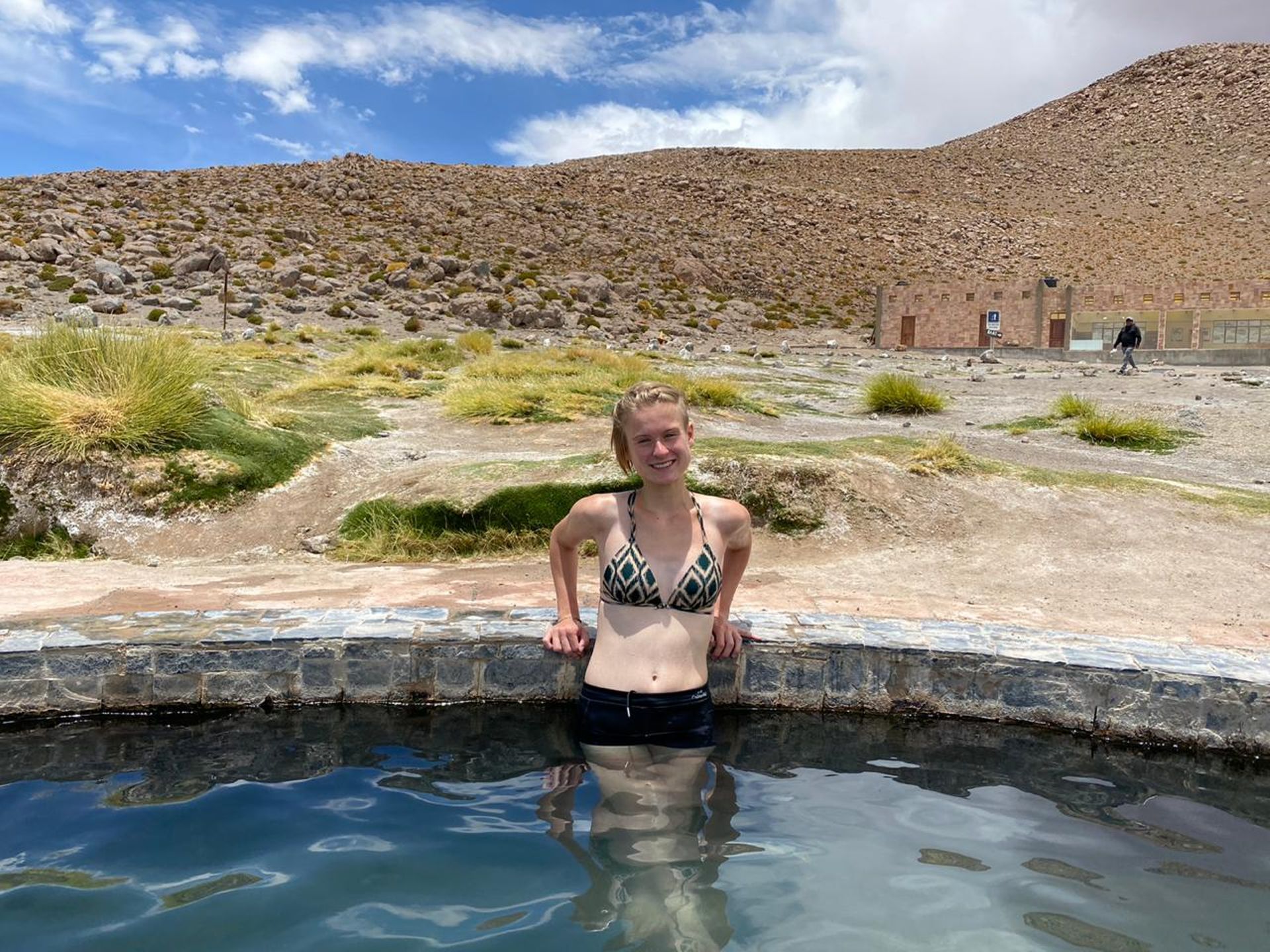
Lunch is served in a house behind the thermal baths. Very strange: each driver brings their own food, so each table has a different meal that the women in the kitchen have to prepare. It would be logistically easier for me if there was a vegetarian menu and a menu with meat, but who knows.

We continue driving uphill, and I'm so grateful that I already acclimatized with Felipe for a few days. The two Brazilians are more out of breath than me, and others also complain of headaches. At our highest point (5000m above sea level), the next 'shock' awaits! I had already seen the geysers on the Chilean side, but it is incomparable to the 'Geysers Sol de Mañana' in Bolivia. You stand in a stone desert in the shape of a crater. And in these craters, gray slag is bubbling, simmering, or boiling. How crazy is that?!
I really don't know what nature was thinking here, I can't find earthly words for it. I simply walk along the craters and try not to inhale too many sulphur fumes.
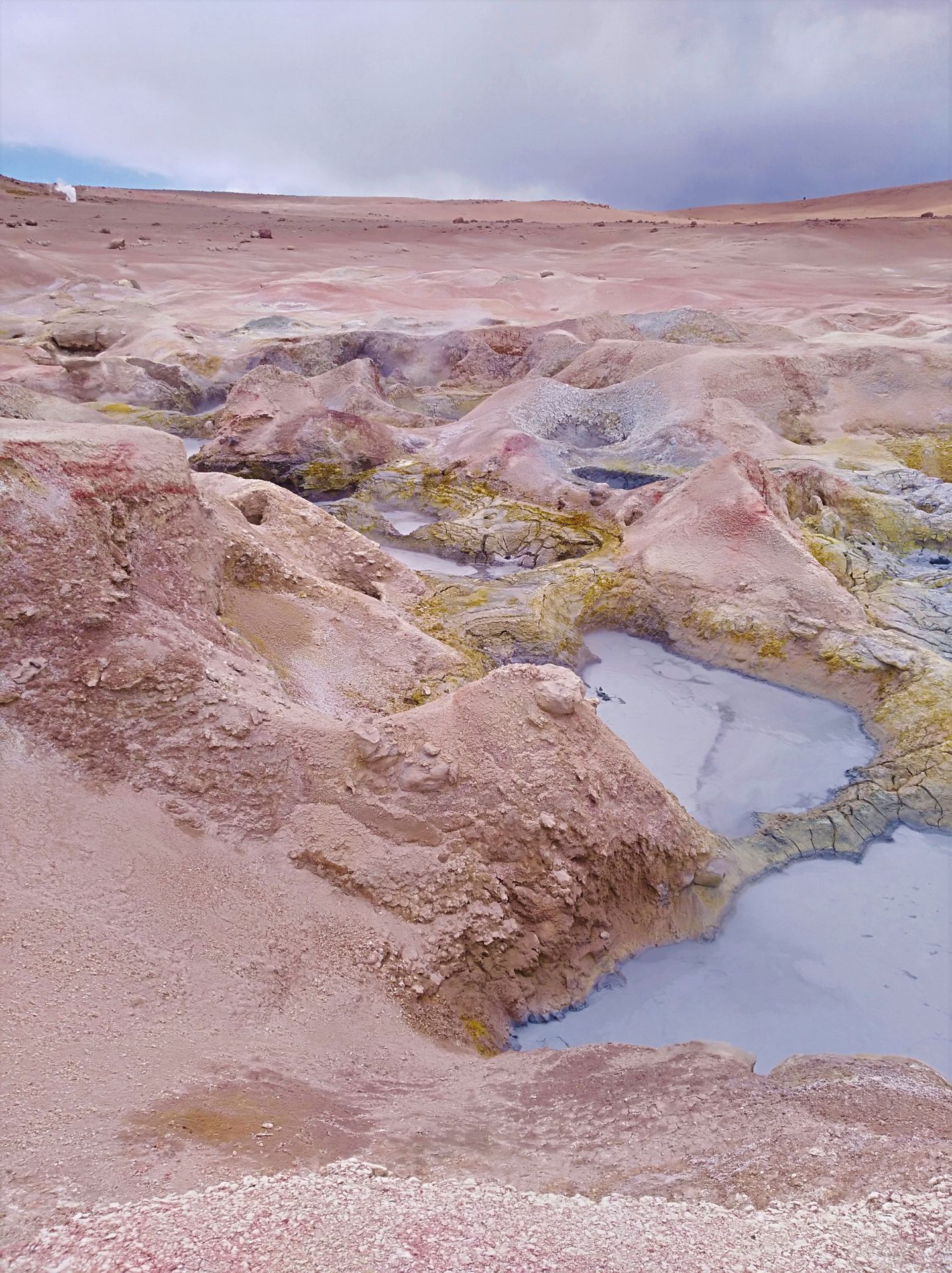
After the geysers, we drive a long stretch. I'm incredibly exhausted from the past few days and the space impressions today.
The next stop is 'Laguna Colorada' and what can I say. The rainbow appears in Bolivia in the sky, on the earth, and in the water. Okay, the main color is rusty red, but it's still incredibly colorful for water. We take a short hike here, there is a place where you can make coffee with running beans, and in the distance, you can spot flamingos.
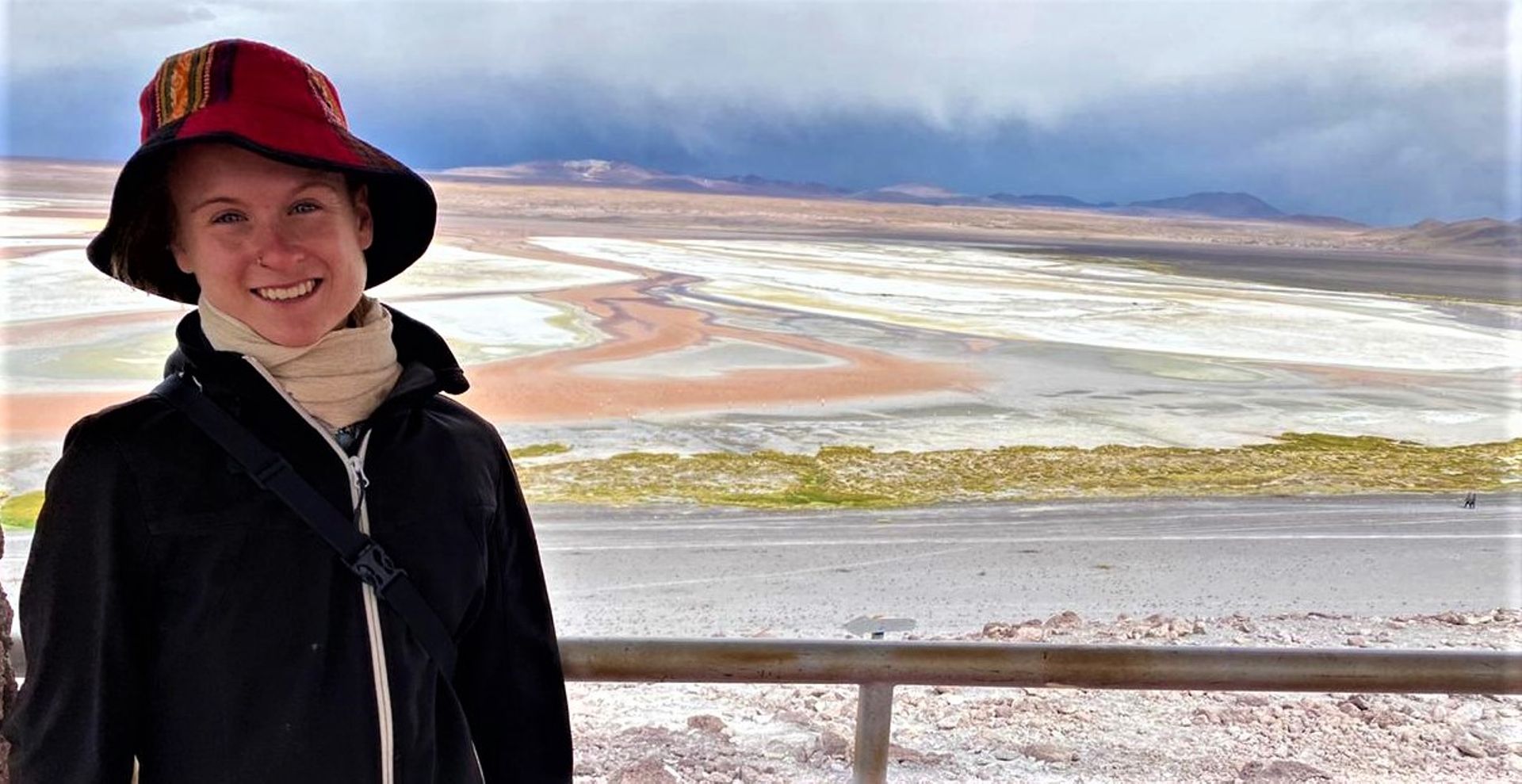
Two hours drive on gravel, sand, and stone paths to 'Villa Mar', where we stay in a hostel. I'm half alive.
The hostel has no electricity and no hot water either. It's a single-story building and we are staying outside in a private room. But the beds are big and the blankets are fluffy. Unfortunately, we slept right next to the emergency power generator, which didn't help with the noise level. But that's all insignificant compared to the things I got to see today.
Frieda (Jan 12)
Harpidetu Buletinera
Erantzun

Bidaien txostenak Bolivia
